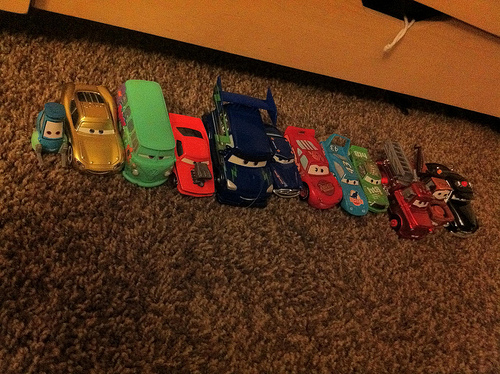For the benefit of people who are not involved with autism, I will start today’s post with a brief primer on what an autism diagnosis actually means. People who are affected by autism and already know this stuff, bear with me.
Most medical conditions are stated in absolute terms, based on whether they are present or not. Think of pneumonia, Downs Syndrome, or meningitis, to name just a few. The severity of symptoms may vary from person to person, but that does not change the diagnosis.
Autism is a spectrum disorder, and where the individual falls on the spectrum can determine his or her diagnosis. One of the more common autism rating scales is called CARS, or Childhood Autism Rating Scale. For diagnostic purposes, anyone who scores over 15 on CARS is regarded to have an autism disorder. The lower numbers – from 15 to about 25 - will result in a more specific diagnosis of Aspergers – what some call “high functioning autism” (the use of this term is highly contentious). At the other end of the scale, from about 40 to the upper limit of 65, there are people who receive a diagnosis of autism. And in the middle are the people who are diagnosed with something called PDD-NOS (Pervasive Developmental Disorder – Not Otherwise Specified).
Although people in all three groups are deemed to have ASD (Autism Spectrum Disorder), the specific diagnosis – and therefore the services they receive – will depend on where they fall on the spectrum. It is worth noting that a child may, over the course of his or her life, be diagnosed with all of three things at one point or another. My own son, for instance, was initially diagnosed with autism. His current clinical diagnosis is PDD-NOS.
Primer over. Now I will get to the point of today’s post.
Now, the diagnostic criteria for autism disorders could be changing, and these changes could have some far-reaching effects on the services that are received by individuals who are on the spectrum. Whether the changes would be good or bad is a matter up for debate.
According to the proposed criteria laid out in DSM-V (Diagnostic & Statistical Manual of mental disorders), there will no longer be individual diagnoses of Aspergers, PDD-NOS and autism. Instead, everyone on the spectrum will get a clinical diagnosis of ASD.
This can be good. In the current diagnostic world of DSM-IV, many people on the spectrum do not get the services they need because they are deemed to be “high-functioning”. With a common diagnosis for everyone, the world of services could be opened up to a host of people who have previously not benefited from it.
But.
Let’s take a look at how the actual diagnostic criteria themselves may be changing.
In DSM-IV – the world as we know it today – a total of twelve symptoms are divided into three groups:
- Qualitative impairment in social interaction.
- Qualitative impairment in communication.
- Restricted repetitive and stereotyped patterns of behaviour, interests and activities.
The individual has to display at least six symptoms, with at least two from the first group, and one each from the second and third groups. If this condition is met, along with a couple of other factors, you have your diagnosis – whether it’s Aspergers, PDD-NOS or autism.
The proposed DSM-V has the following stipulations, all of which must be met:
- Persistent deficits in social communication and social interaction across contexts. Individuals must display all of three symptoms that are worded in very specific terms.
- Restricted, repetitive patterns of behaviour, interests or activities. Individuals must display two of four symptoms that again, are very specifically worded.
- Symptoms must be present in early childhood.
- Symptoms together limit and impair everyday functioning.
The groupings of symptoms, in conjunction with the way in which they are worded, means that it will be more difficult to get an ASD diagnosis, particularly for individuals on the “Aspergers” end of the spectrum. There is a segment of the ASD population who are regarded as “high-functioning” relative to people more severely affected by autism. These people may not meet all of the criteria laid out in DSM-V.
What this means is that although the actual incidence of autism will continue to climb, we may see a decline in actual diagnoses. The general public will be misled into believing that the autism epidemic is being brought under control.
And a host of people who need services could be denied them, simply because they don’t meet the right combination of conditions listed in a manual.
It is important to note that the DSM-V is, at this stage, a draft. It will in all likelihood pass through a host of revisions based on feedback and testing. The DSM-V that is ultimately released could look very different to what is discussed here.
It will be interesting to see if, and how, the autism diagnostic landscape will change.











